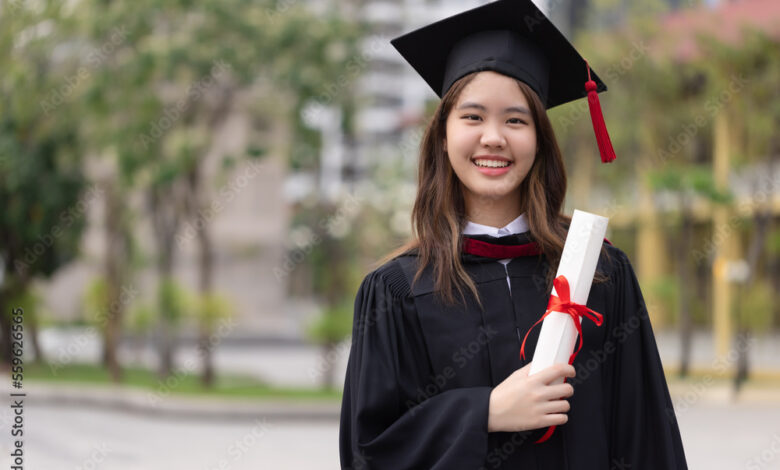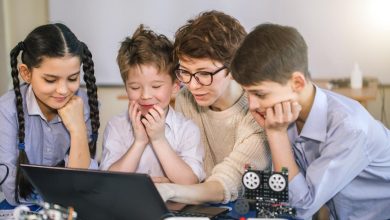Online Learning Vs Traditional Education Which Is Better?

Online Learning vs Traditional Education: Which Is Better? sets the stage for this enthralling narrative, inviting readers to explore the ever-evolving landscape of education. In an age where technology permeates every aspect of our lives, the debate between online learning and traditional education has become increasingly relevant. Both methods have their unique characteristics and benefits, but they also present distinct challenges. By examining the historical context, benefits, and drawbacks of each approach, we can gain valuable insights into which method may better suit individual learning preferences and circumstances.
Overview of Online Learning and Traditional Education: Online Learning Vs Traditional Education: Which Is Better?
Both online learning and traditional education have distinct characteristics that cater to the diverse needs of learners in today’s world. Understanding these two educational paradigms offers insight into their advantages and drawbacks, thereby helping educators and students make informed choices about their learning pathways.
Online learning, often referred to as e-learning or distance education, involves the use of digital platforms to deliver educational content and facilitate interaction between instructors and students. Typically characterized by its flexibility, accessibility, and use of multimedia resources, online learning can be conducted asynchronously or synchronously. This allows learners to access course materials at their convenience, participate in discussions, and complete assignments according to their own schedules.
Characteristics of Online Learning
The defining features of online learning highlight its adaptability to modern educational demands. Key aspects include:
- Flexibility: Students can learn from various locations and at times that suit their individual schedules, making education more adaptable to personal commitments.
- Diverse Learning Materials: Online courses often utilize videos, podcasts, interactive quizzes, and discussion forums, catering to different learning styles.
- Global Reach: Online learning enables students from different geographical locations to access quality education, breaking down barriers of distance.
- Technology Integration: The use of Learning Management Systems (LMS) and other educational technologies enhances interactivity and engagement in the learning process.
Traditional education, on the other hand, is characterized by face-to-face instruction in physical classrooms. This conventional method relies on structured curricula, standardized assessments, and direct interaction between teachers and students. Traditional education typically follows a scheduled timetable and requires physical presence for lectures, labs, and discussions.
Key Features of Traditional Education
The fundamental characteristics of traditional education provide a structured environment conducive to learning. Some of the prominent features include:
- Structured Environment: Traditional education often follows a fixed curriculum with specific goals, providing a clear pathway for student progression.
- Direct Interaction: Face-to-face communication with instructors and peers enhances social skills and facilitates immediate feedback.
- Extracurricular Activities: Traditional institutions often provide opportunities for students to engage in sports, clubs, and other activities that contribute to personal development.
- Standardized Assessments: Regular testing and examinations evaluate student performance and comprehension, ensuring accountability.
The historical evolution of both educational methods illustrates their respective impacts on society and the learning process. Traditional education has existed for centuries, rooted in the principles of in-person instruction, while online learning emerged in the late 20th century, propelled by advancements in technology. The rise of the internet and digital communication has significantly accelerated the growth of online learning, especially in recent years, leading to a broader acceptance of this mode of education as a viable alternative to traditional methods.
Historical Evolution of Online Learning and Traditional Education
The timeline of educational methods showcases the shift from traditional to online formats in response to societal changes. Historical milestones include:
- Traditional Education: Established in ancient civilizations, traditional education has evolved through various pedagogical approaches, such as the Socratic method and the rise of universities in the Middle Ages.
- Distance Education: The concept of distance education began with correspondence courses in the 19th century, allowing students to learn remotely through mailed materials.
- Advent of E-learning: The proliferation of the internet in the late 1990s marked the inception of e-learning, with institutions developing online courses to cater to a growing demand for flexible learning options.
- Current Trends: The COVID-19 pandemic accelerated the adoption of online learning globally, prompting educational institutions to adapt rapidly to digital formats.
Benefits of Online Learning
Online learning has revolutionized the educational landscape, offering numerous advantages that cater to diverse learning needs and lifestyles. This form of education harnesses technology to enhance accessibility and effectiveness, presenting a myriad of benefits for learners across the globe.
Flexibility and Convenience
One of the most significant benefits of online learning is the flexibility it provides. Learners can access courses and materials at any time and from virtually any location, which is especially advantageous for those balancing work, family, or other commitments. This flexibility allows individuals to study at their own pace, accommodating different learning speeds and styles. For instance, a working professional can attend lectures during their lunch break or engage in coursework during weekends.
The convenience of online platforms means that students can design a study schedule that fits their personal lives. This autonomy not only aids in maintaining a healthy work-life balance but also promotes self-discipline and time management skills.
Cost-Effectiveness and Financial Considerations
Online learning often presents a more cost-effective solution compared to traditional education. Students can save on commuting expenses, housing costs, and materials since many resources are available digitally. Additionally, online courses frequently have lower tuition fees than their in-person counterparts, making quality education more accessible to a broader audience.
Several reputable institutions offer free or low-cost online courses, allowing learners to acquire knowledge without incurring significant debt. For example, platforms such as Coursera and edX partner with universities to provide a variety of courses at minimal costs, allowing individuals to enhance their skills without overwhelming financial burdens.
Variety of Courses and Resources
The online learning environment offers an extensive array of courses and resources that cater to almost every interest and professional field. Learners are no longer restricted to the limited offerings of their local institutions; instead, they can choose from thousands of courses provided by universities and institutions worldwide.
This diversity enables students to explore subjects that may not be available in their geographical area. Furthermore, online platforms often provide supplementary resources such as video lectures, interactive quizzes, and discussion forums that enhance the learning experience. For instance, platforms like Udemy and Khan Academy offer courses ranging from computer programming to art history, ensuring that every learner finds a niche that suits their interests and career aspirations.
“Education is the most powerful weapon which you can use to change the world.” – Nelson Mandela
Advantages of Traditional Education
Traditional education, characterized by in-person interactions and structured environments, offers numerous advantages that continue to resonate with learners and educators alike. The unique aspects of traditional learning environments foster essential skills and provide opportunities that online education may not fully replicate.
Importance of Face-to-Face Interaction
Face-to-face interaction in traditional education settings is vital for developing interpersonal skills and fostering a sense of community among students. Engaging directly with peers and instructors in a physical classroom enhances collaboration and encourages active participation. This dynamic allows for immediate feedback and clarification of concepts, which can significantly enhance understanding.
The benefits of in-person communication include:
- Building relationships: Students can create lasting friendships and professional networks through daily interactions.
- Immediate support: Direct access to instructors for assistance helps address questions and concerns promptly.
- Non-verbal cues: In-person communication allows students to pick up on body language and tone, enriching the learning experience.
Structured Environment and Discipline
The structured environment provided by traditional education fosters discipline and time management skills among students. Attending classes at set times and adhering to a syllabus helps learners develop a routine that can benefit their academic and personal lives. In this structured setting, students are encouraged to engage with the material in a focused manner, minimizing distractions that can often arise in online formats.
Key aspects of this structured environment include:
- Consistent schedule: Regular class times promote commitment and accountability in students’ learning journeys.
- Defined learning paths: Curricula are designed to cover essential content systematically, ensuring comprehensive understanding.
- Distraction-free environment: Traditional classrooms minimize distractions compared to home settings, promoting a better learning atmosphere.
Value of Networking Opportunities, Online Learning vs Traditional Education: Which Is Better?
Traditional educational institutions provide invaluable networking opportunities that can greatly influence students’ future careers. Engaging with classmates, educators, and industry professionals during events such as seminars, workshops, and social gatherings allows students to form connections that could lead to internships, job placements, and mentorships.
The significance of networking in traditional education encompasses the following benefits:
- Access to a diverse community: Students meet individuals from various backgrounds, enriching their perspectives and enhancing collaboration.
- Exposure to industry insights: Guest speakers and faculty often bring real-world perspectives into the classroom, broadening students’ horizons.
- Career development: Networking can lead to job opportunities or internships that are often not advertised publicly, making connections crucial for career advancement.
Challenges of Online Learning
Online learning presents numerous advantages, yet it also brings forth several challenges that students must navigate. These challenges can significantly impact the effectiveness of the online learning experience, necessitating awareness and strategies to overcome them. Among these concerns are potential distractions, a lack of personal interaction, and technological barriers that can hinder students’ progress and engagement.
Distractions and Self-Discipline Issues
One of the significant challenges of online learning is the potential for distractions that come from the home environment. Unlike traditional classroom settings, where the learning environment is structured and controlled, online learners often find themselves surrounded by various interruptions, such as household chores, family members, or entertainment options. Without the physical presence of an instructor or classmates, maintaining focus requires a high level of self-discipline. Many students may struggle with time management, leading to procrastination and incomplete assignments. Establishing a dedicated study space and setting a strict schedule can help mitigate these distractions and foster a more productive learning environment.
Lack of Personal Interaction and Support
Another challenge of online learning is the diminished personal interaction and support that students experience. In traditional education, face-to-face interactions with instructors and peers foster immediate feedback, collaboration, and a sense of community. The absence of these social interactions in an online setting can lead to feelings of isolation and disconnect. This lack of engagement may affect a student’s motivation and overall academic performance. To counteract this, institutions are implementing virtual study groups, discussion forums, and regular check-ins with instructors to enhance interaction and provide necessary support.
Technology Access and Digital Literacy Issues
Access to technology and digital literacy represents another critical challenge in online education. Not all students have equal access to the necessary devices or reliable internet connections, which can create significant disparities in learning opportunities. Additionally, the proficiency in using online platforms and educational tools varies among students, which can hinder their ability to fully participate in courses. Institutions must address these inequalities by providing resources, training, and support systems to ensure that all students can effectively engage with the digital learning environment. Moreover, initiatives such as loaner programs for devices or enhancing community internet access can also bridge the technological gap.
Challenges of Traditional Education
Traditional education, often characterized by in-person classroom interactions and structured environments, faces several significant challenges that can impact students’ learning experiences. These limitations can hinder accessibility and overall effectiveness in meeting diverse educational needs.
Geographical Limitations and Accessibility
One of the most prominent challenges of traditional education is the geographical limitation it imposes on students. Many educational institutions are located in urban areas, which can create barriers for students residing in remote or rural regions. As a result, individuals may find it difficult to access quality education, leading to inequities in educational opportunities.
In addition to location, transportation issues can further complicate accessibility. For instance, students without reliable transportation may struggle to commute to schools, affecting their attendance and engagement. According to the National Center for Education Statistics, approximately 10% of students in rural areas report difficulties in accessing educational resources, significantly impacting their academic progress.
Rigid Scheduling and Time Management Constraints
Traditional education often adheres to a fixed schedule, which can restrict students’ ability to manage their time effectively. Classes typically follow a predetermined timetable, requiring students to be present at specific times throughout the day. This rigidity can pose challenges for individuals who balance work, family, or personal commitments, leading to increased stress and potential burnout.
Furthermore, the requirement for physical presence during specific hours may not align with the varied learning paces of students. Some may require more time to grasp complex subjects, while others could excel with accelerated learning. A 2018 study indicated that over 40% of students felt overwhelmed by the structured scheduling of traditional education, which can detract from their overall learning experience.
Fixed Curriculum and Lack of Customization
The curriculum in traditional educational settings is often standardized, providing a one-size-fits-all approach that may not cater to the diverse learning styles and interests of all students. While certain subjects are essential, such as mathematics and language arts, the inability to customize the learning experience can lead to disengagement among students who may not find relevance in the prescribed material.
Moreover, the lack of flexibility in course offerings can stifle creativity and exploration. Students interested in innovative fields or specialized topics may find limited opportunities to pursue their passions within the confines of a traditional curriculum. Educational institutions often adhere to state or federal guidelines that dictate course content, which can further limit the ability to adapt to the needs and interests of students. As a result, many students may feel that their unique skills and talents are not being nurtured, leading to decreased motivation and academic performance.
Learning Styles and Preferences
Different learning styles and preferences play a crucial role in shaping the educational experience for students, influencing their engagement, understanding, and retention of information. Both online learning and traditional education cater to diverse learning preferences, but they do so in distinct ways that can impact overall effectiveness. An exploration of how each format addresses various learning styles reveals significant insights into their respective strengths and challenges.
Addressing Learning Styles in Online and Traditional Education
Online learning environments often utilize a variety of multimedia resources, including videos, interactive simulations, and discussion forums, to cater to visual, auditory, and kinesthetic learners. This flexibility allows students to engage with content in a manner that aligns with their personal learning preferences. For example, a visual learner may benefit from instructional videos and infographics, while an auditory learner may find podcasts and discussion forums more effective.
Conversely, traditional education typically relies on a more standardized approach, predominantly using lectures and textbooks. While this format can effectively address the needs of students who thrive in structured environments, it may not sufficiently engage those who learn better through hands-on experiences or interactive discussions. However, traditional classrooms also provide opportunities for immediate feedback and face-to-face interactions, which can enhance understanding and retention.
Effectiveness of Teaching Methods in Both Formats
The effectiveness of teaching methods varies significantly between online and traditional education, largely due to the inherent differences in delivery and interaction. In online learning, adaptive learning technologies can personalize the educational experience, responding to students’ progress and offering tailored resources. This dynamic approach can lead to improved outcomes, particularly for self-motivated learners who are comfortable navigating digital platforms.
In traditional education, direct teacher-student interactions foster a personal connection that can enhance motivation and accountability. Teachers can gauge student understanding in real-time and adjust their teaching strategies accordingly. Furthermore, group activities and collaborative projects can encourage peer learning and social interaction, which are essential for many students’ educational experiences.
Student Engagement and Motivation in Each Style
Engagement and motivation are critical factors influencing educational success, and both online and traditional formats present unique challenges and benefits in this regard. Online learning often necessitates a higher degree of self-discipline and intrinsic motivation from students, as they must manage their time and stay accountable without the structured routine of a physical classroom. Strategies such as gamification and interactive elements can enhance engagement in online environments, making learning more appealing and enjoyable.
In traditional education, the physical presence of a teacher and peers can create a motivating atmosphere, as students are often more accountable to their classmates and instructors. However, disengagement can occur if the teaching methods do not resonate with diverse learning styles. Incorporating varied instructional strategies and fostering an inclusive classroom environment can significantly enhance student motivation and engagement.
Both online and traditional education offer distinct advantages and challenges in addressing diverse learning styles, impacting student engagement and overall effectiveness.
Future Trends in Education
The landscape of education is continuously evolving, influenced by advancements in technology and shifting societal needs. As we look towards the future, it becomes evident that both online learning and traditional education will undergo significant transformations. This section explores emerging technologies that are poised to influence online learning, potential reforms in traditional education systems, and the rise of hybrid models that integrate aspects of both educational environments.
Emerging Technologies Influencing Online Learning
The integration of technology in education has already reshaped learning experiences, and future trends indicate an even greater reliance on advanced tools. Innovations such as artificial intelligence (AI), virtual reality (VR), and augmented reality (AR) are becoming increasingly prevalent in online learning platforms. These technologies offer interactive, immersive experiences that enhance student engagement and understanding.
– Artificial Intelligence: AI can personalize learning experiences by analyzing student data and tailoring educational content to meet individual needs, thereby improving outcomes.
– Virtual Reality: VR provides simulated environments for learners, enabling them to experience complex concepts firsthand, such as historical events or scientific phenomena.
– Augmented Reality: AR overlays digital information onto the real world, allowing for interactive and engaging learning experiences that are rooted in real-life contexts.
The application of these technologies is expanding, leading to more effective and engaging online learning solutions.
Potential Reforms in Traditional Education Systems
Traditional education systems are beginning to adapt in response to the changing needs of students and the job market. Reforms focus on increasing flexibility, accessibility, and relevance of curricula. The following key areas are under consideration for reform:
– Curriculum Modernization: Updating curricula to include skills that are increasingly relevant in the modern workforce, such as critical thinking, digital literacy, and collaboration.
– Flexible Learning Environments: Schools are exploring flexible schedules and blended learning models, allowing students to learn at their own pace and in their preferred environments.
– Assessment Innovations: There is a push towards more holistic assessment methods, moving beyond standardized testing to evaluate student understanding and skills more effectively.
These reforms aim to bridge the gap between traditional education and the demands of a rapidly evolving society.
Hybrid Models Combining Both Learning Environments
Hybrid models of education are emerging as a viable solution, combining the strengths of both online and traditional education. These models provide flexibility while maintaining the benefits of in-person interactions. Key characteristics include:
– Blended Learning: This approach integrates online coursework with face-to-face instruction, offering students a balanced learning experience that accommodates various learning styles.
– Flipped Classroom: In this model, traditional lecture materials are provided online, allowing in-class time to focus on discussions, group work, and hands-on activities.
– Personalized Learning Paths: Hybrid models allow for the customization of learning experiences, enabling students to progress at their own pace while still receiving guidance and support from educators.
These hybrid models are gaining traction as they cater to diverse learner needs, ensuring that education remains relevant and effective in the future.
Personal Experiences and Case Studies
The exploration of personal experiences and case studies concerning online learning and traditional education offers valuable insights into the effectiveness of each method. By analyzing individual anecdotes and documented outcomes, we can better understand how various educational approaches impact student success and satisfaction.
Numerous individuals have transitioned between online and traditional education, each with unique stories that highlight the strengths and weaknesses of both systems. These experiences often reflect personal preferences, learning styles, and the specific challenges faced in each educational environment.
Anecdotes from Individuals
Many students have reported transformative experiences when switching from traditional classrooms to online learning platforms. For instance, Sarah, a college student, struggled with the rigid structure of traditional classes, finding it difficult to engage with the material. Upon enrolling in an online degree program, she discovered a more flexible schedule that allowed her to study at her own pace. This shift led to a significant improvement in her grades and overall satisfaction with her educational journey.
Conversely, John, who thrived in face-to-face interactions, found online learning isolating and challenging. He missed the classroom discussions and immediate feedback from instructors, which he felt enhanced his learning experience. John ultimately decided to return to traditional education, where he excelled in a collaborative environment.
Case Studies Highlighting Success Rates
Various studies have examined the success rates of students in online versus traditional educational settings, providing empirical evidence to support personal accounts. A notable study conducted by the U.S. Department of Education in 2010 analyzed over 1,000 peer-reviewed articles and found that students who engaged in online learning performed better on average than those receiving traditional face-to-face instruction. This outcome was particularly significant for adult learners who often juggle work and family commitments.
Another case study from the University of Phoenix revealed that students enrolled in online courses demonstrated higher retention rates compared to those in traditional settings. The flexible nature of online education allows students to balance their responsibilities while still achieving academic success.
Testimonials Reflecting Preferences and Outcomes
Testimonials provide a window into the subjective experiences of learners. For example, Jessica, a working professional, shared her positive experience with online education, stating,
“The ability to access lectures and materials at any time allowed me to integrate my studies into my busy work schedule seamlessly.”
This flexibility not only improved her academic performance but also enhanced her job-related skills.
In contrast, a report from a group of high school students indicated that many preferred hands-on activities and in-person interactions, which they felt were lacking in online formats. One student remarked,
“I learn best when I can discuss topics with my peers and teachers; online classes just don’t offer the same engagement.”
These testimonials highlight the importance of individual learning preferences and how they can significantly influence educational outcomes.
Conclusion and Recommendations
In summarizing the comparative analysis of online learning and traditional education, it is evident that both modalities have unique strengths and weaknesses that cater to different learning preferences and circumstances. Online learning offers flexibility and accessibility, making it an appealing choice for many, whereas traditional education fosters a structured environment conducive to direct interaction and personalized support. Understanding these dynamics can aid individuals in making informed decisions about their educational paths.
The exploration of benefits associated with online learning highlights its convenience, self-paced nature, and broader reach, allowing learners to access resources and expertise that might otherwise be unavailable. In contrast, traditional education is characterized by its established framework, which promotes discipline, social skills, and immediate feedback from instructors. However, both modalities face challenges; online learning grapples with concerns about engagement and the digital divide, while traditional education often struggles with rigidity and the need for curriculum modernization.
Best Practices for Choosing Between Online and Traditional Education
When selecting between online and traditional education, individuals should consider several best practices that align with their personal learning styles and career objectives.
- Assess your learning style: Understanding whether you thrive in self-directed environments or prefer structured classroom settings is crucial.
- Evaluate your circumstances: Consider factors such as work commitments, family responsibilities, and geographical location, which can impact your ability to engage in either modality.
- Research program quality: Look for accredited institutions and reviews from past students to ensure the educational experience meets your expectations.
- Consider long-term goals: Reflect on how each mode of education aligns with your career aspirations and the skills required in your desired field.
- Trial options: If possible, experience both formats through free courses or workshops to determine which suits you best.
Design Guidelines for Educators and Institutions
To enhance the effectiveness of both online and traditional education, educators and institutions must adopt certain design guidelines that promote optimal learning experiences:
- Integrate technology: Utilize digital tools and resources in traditional classrooms to bridge the gap between both modalities, enriching the learning environment.
- Foster interaction: Encourage collaborative activities and discussions, both online and in-person, to build community and enhance understanding.
- Provide support services: Offer academic advising, mental health resources, and technical assistance to help students navigate their educational journeys.
- Adapt curricula: Regularly update course materials to include current trends, technologies, and methods, ensuring relevance and engagement.
- Solicit feedback: Regularly gather input from students to assess the effectiveness of teaching methods and materials, allowing for continuous improvement.
Closure
In conclusion, while Online Learning and Traditional Education each possess their own merits and drawbacks, the choice ultimately depends on the individual’s learning style, goals, and circumstances. As education continues to adapt and evolve, understanding the strengths and weaknesses of both methods will empower learners to make informed decisions. Whichever path one chooses, the ultimate aim remains the same: to foster knowledge, skills, and personal growth in an ever-changing world.
FAQ Overview
Is online learning as effective as traditional education?
Online learning can be equally effective, depending on the learner’s style, motivation, and the quality of the program.
What technology is required for online learning?
Basic technology requirements typically include a computer or tablet, reliable internet access, and software needed for specific courses.
Can traditional education provide better networking opportunities?
Yes, traditional education often provides more face-to-face networking opportunities through interactions with peers and faculty.
What are common self-discipline challenges in online learning?
Common challenges include managing time effectively, avoiding distractions, and maintaining motivation without direct supervision.
How do learning styles affect the choice between online and traditional education?
Different learning styles may align better with the interactive nature of traditional classrooms or the flexibility of online platforms, influencing individual preferences.







